by Daniel Hathaway
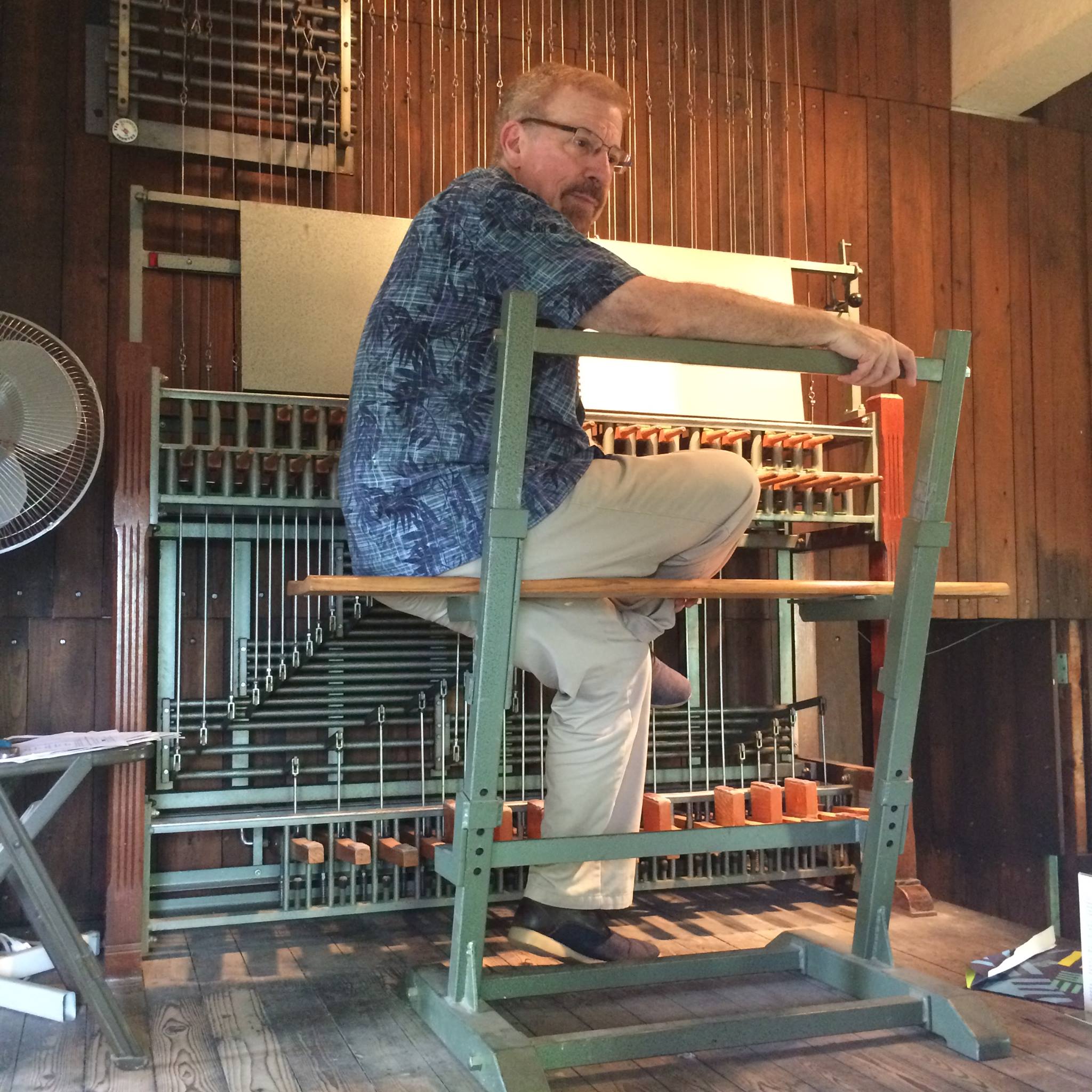
Leggiero obviously got to love them — in October, he’ll celebrate his 45th anniversary as resident carillonneur for the McGaffin Memorial Carillon, a job that came with a learning curve. “I’d had two semesters of piano lessons when the church asked me if I was interested in the job. I worked by myself for a month, I auditioned, they hired me, and I’ve been there ever since.”
Time out for a brief comparison of church bells. There are bells in various numbers that merely ring to call people to services or mark certain hours of the day. There are larger sets of bells that form a scale or peal that are rung British-style in “changes” or mathematical patterns that can go on for hours until permutations are exhausted. Then there are carillons — collections of 23 or more tuned bells on which trained carillonneurs can play arrangements of all kinds of music. The latter are popular in Belgium and the Netherlands, and there are four in the Cleveland area — two-octave instruments at St. Paul’s in Cleveland Heights and St. Christopher’s in Gates Mills, and the 47-bell, four-octave carillons at the Covenant and the Church of the Savior in Cleveland Heights.

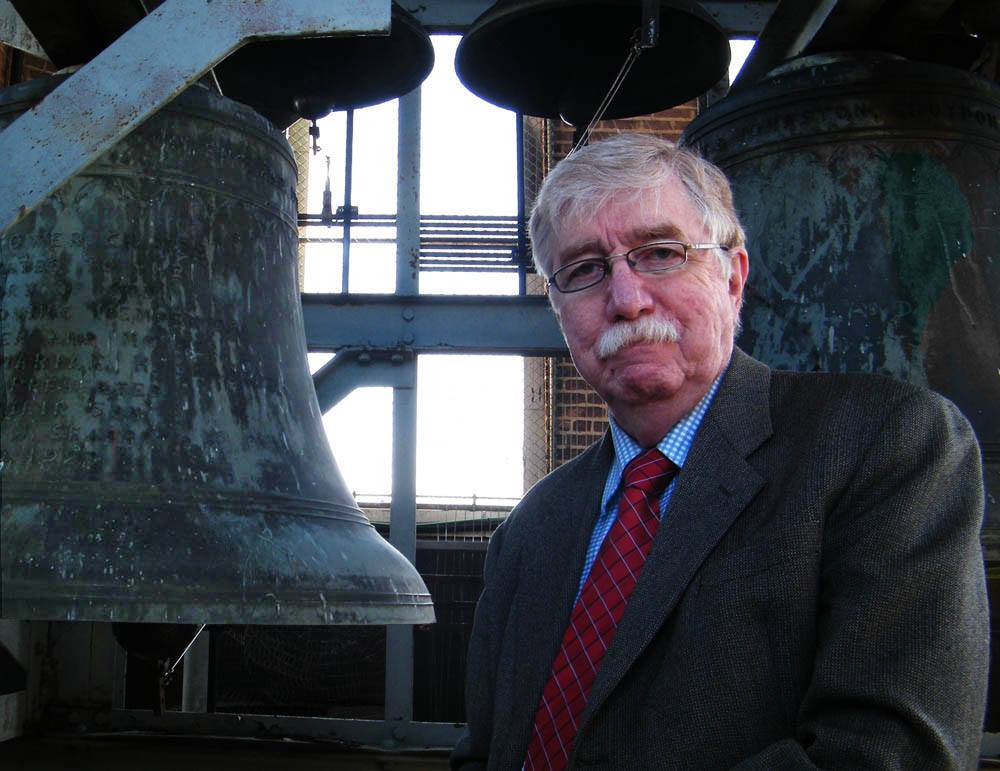
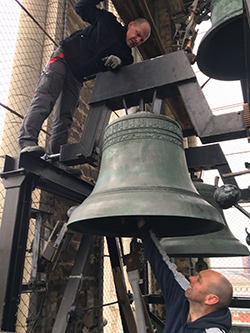
Then on Sunday, the church will mark the anniversary with bell-themed readings and music at its morning service, followed by music from the carillon. The main event will begin at 2:00 pm. “I’ll give a pre-concert talk at 1:15 pm, then David Osburn and I will join Patrick Macoska, a retired Michigan architect, in a varied concert including music for four fists, followed by a reception,” Leggiero said.
The carillonneur’s quip about “four fists” refers to the technique of striking the levers of the carillon “keyboard” with the sides of the fists. “You can also occasionally open your hand to play fourths or fifths,” Leggiero said, adding that larger bells are operated with similar levers played with the feet. Like organ music, music for the carillon is written on staves, in treble clef for the hands and bass clef for the feet. Beyond that, carillon playing is very different. “On any other instrument you worry about releasing notes. On the carillon, when you ring a bell it sounds forever — whether it’s the right note or not.”

Still, carillon playing is a physical activity. “You are moving around a lot, and since the tower isn’t air conditioned, an hour-long recital can wear you out,” Leggiero said. Then there’s the exertion involved in simply climbing the circular stairs to the ringing chamber. “When I joined a gym 15 or 20 years ago, they did a strength assessment and couldn’t figure out why my legs were in the top percentile and my arms were in the lowest percentile. Now, my left knee is just beginning to complain after 47 years of climbing stairs counterclockwise.”
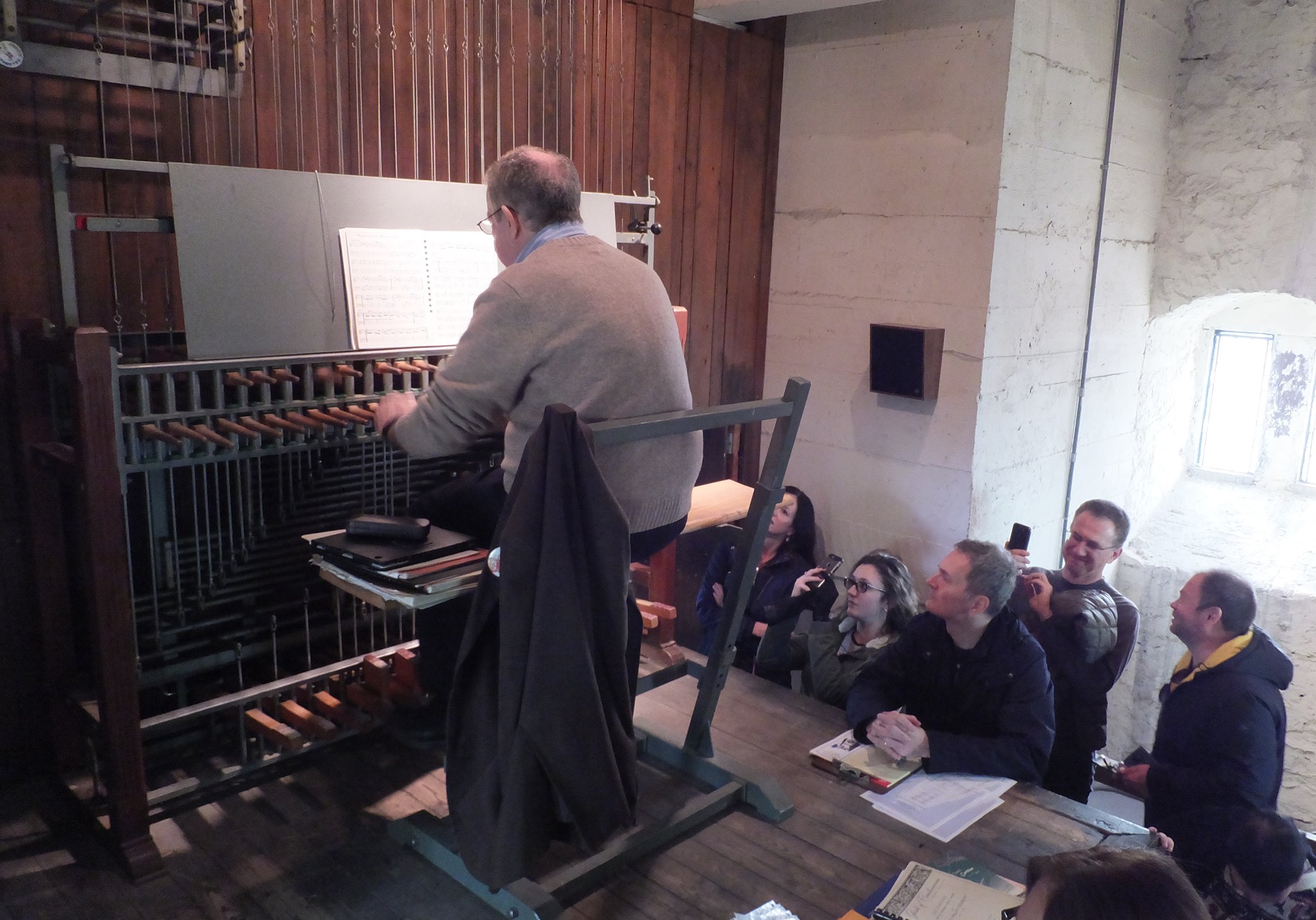
While the Covenant carillon was originally installed by the church, its maintenance and administration is now the responsibility of the Friends of the McGaffin Carillon, a non-profit organization that sees the Tower as a community resource and which paid for the restoration of the peal. Leggiero hopes that a contract will be signed in the near future to add two bells, renovate the ringing mechanism, and replace both the keyboard and the practice keyboard that allows carillonneurs to rehearse using tone bars, “so we can stay friends with the neighbors,” he said.
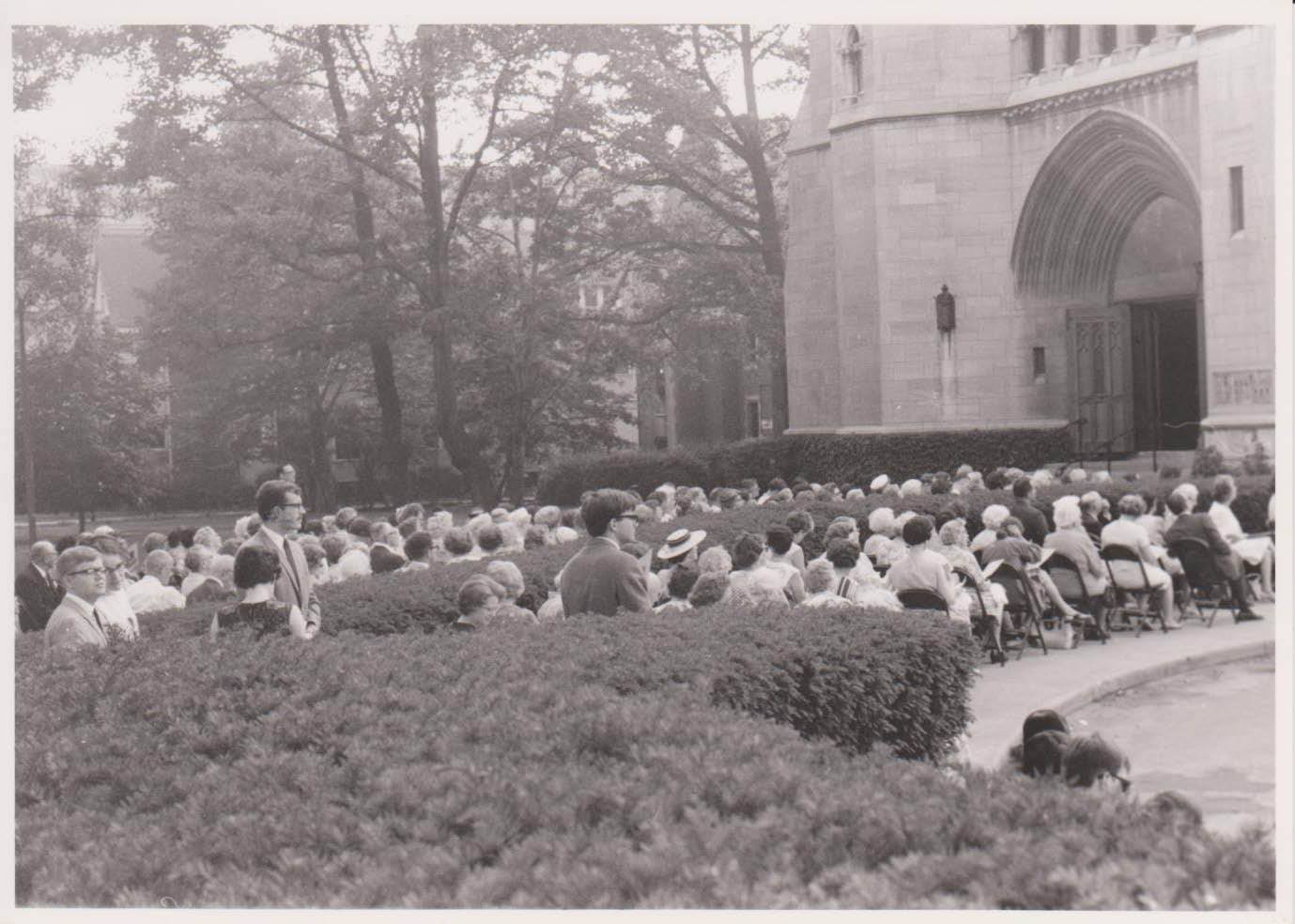
Future carillonneurs can rest assured about one thing. Despite the theme for the Covenant’s Parade the Circle float, Leggiero says there are no bats in the belfry. “Maybe a few pigeons, but that’s it.”
Photos from the 1968 installation and dedication: music director Henry Fusner tries out a bell in the parking lot; the audience on the church lawn at the dedication recital.
Published on ClevelandClassical.com June 5, 2018.
Click here for a printable copy of this article



